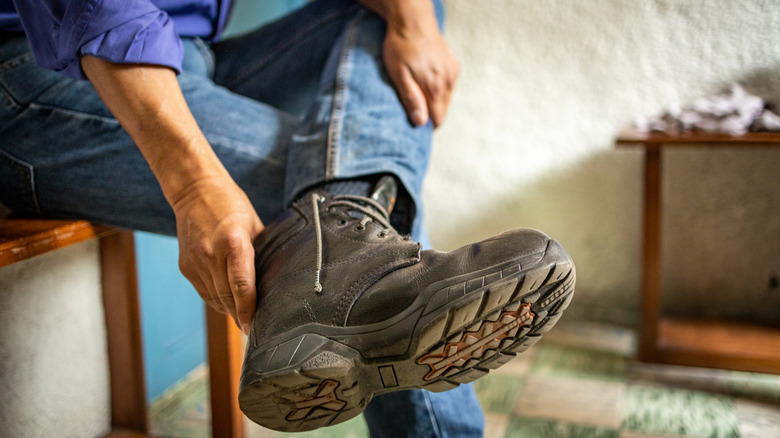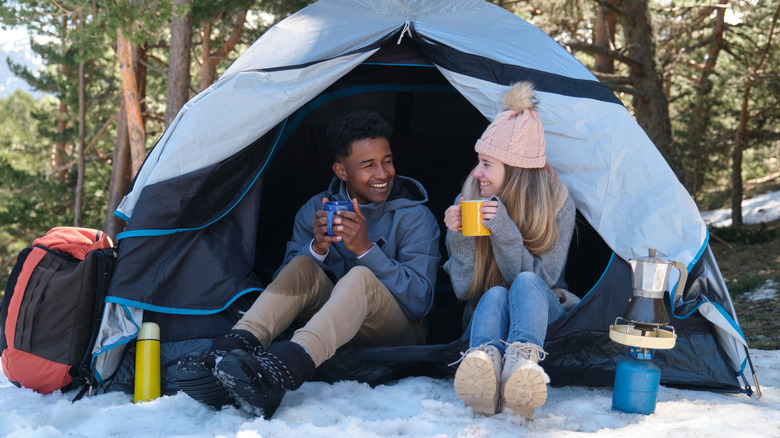Keep Your Feet Warm And Dry While Camping With One Common Kitchen Item And This Hack
With socks, shoes, a sleeping bag, and a blanket, your feet should stay nice and toasty while camping, right? Not so much. Even infrequent campers know that unexpected conditions can arise and lay waste to the most finely laid plans. Maybe your waterproof shoes don't hold up against an unseen puddle of mud. Perhaps rain leaks into the tent and soaks into your socks and freezes overnight. But thankfully, hacks exist. And right at the top of the warm-and-dry feet hack list sits a common kitchen item that crinkles and shines: aluminum foil.
We don't mean you should wrap the outside of your boot with foil and become someone else's story about a maniac they saw on the trail. Simply take foil from the cupboard and wrap it around your sock like a second, metal sock. Then, slip your foot into your shoe or boot and you're good to go — more or less.
This is an obviously imperfect method of keeping your feet dry and warm. If you wrap your foot with foil from the bottom up, then you run the risk of making a cup that'll catch any liquid that flows in from the top. This means the ankle of the shoe needs to be properly sealed. Unless the foil inside tears, it'll protect your sock from any liquid that soaks into the shoe.
Protecting your feet from cold hiking conditions
While lining your shoes with aluminum foil is a handy way to help keep your feet dry and warm while hiking, it's just one tool in a toolbox, not the end-all, be-all solution. Items like toe warmers that you slip into your boots, gaiters that wrap around your ankle and shin and act as a water barrier, and heated socks should be combined with typical feet-warming solutions like multiple sock layers, spare socks, properly waterproof boots, and fleece blankets for sleeping. These items, plus gear like crampons, can help folks tackle even the most imposing outdoor activity, like climbing the Vatnajökull glacier at Vatnajökull National Park in Iceland.
But even more fundamentally than any clothing or shelter-related item, warmth starts with movement. It's important to not neglect the warmth of your torso and head, which is why clever clothing layering — especially that ancient, sheep-shorn material, wool — is essential when temperatures drop from cold to deathly frigid. Also, knowledge of weather conditions is critical when heading into cold and wet territory. If you're wondering whether or not to line your shoes with foil, then you're already at the point where weather is a key concern.
Finally, if you're at all concerned that you're extending yourself past your experience and skill by setting out into cold or wet conditions, then you can always stick to a beginner-friendly trail. The same tips we outlined apply no matter the difficulty of your hike, foil included.

